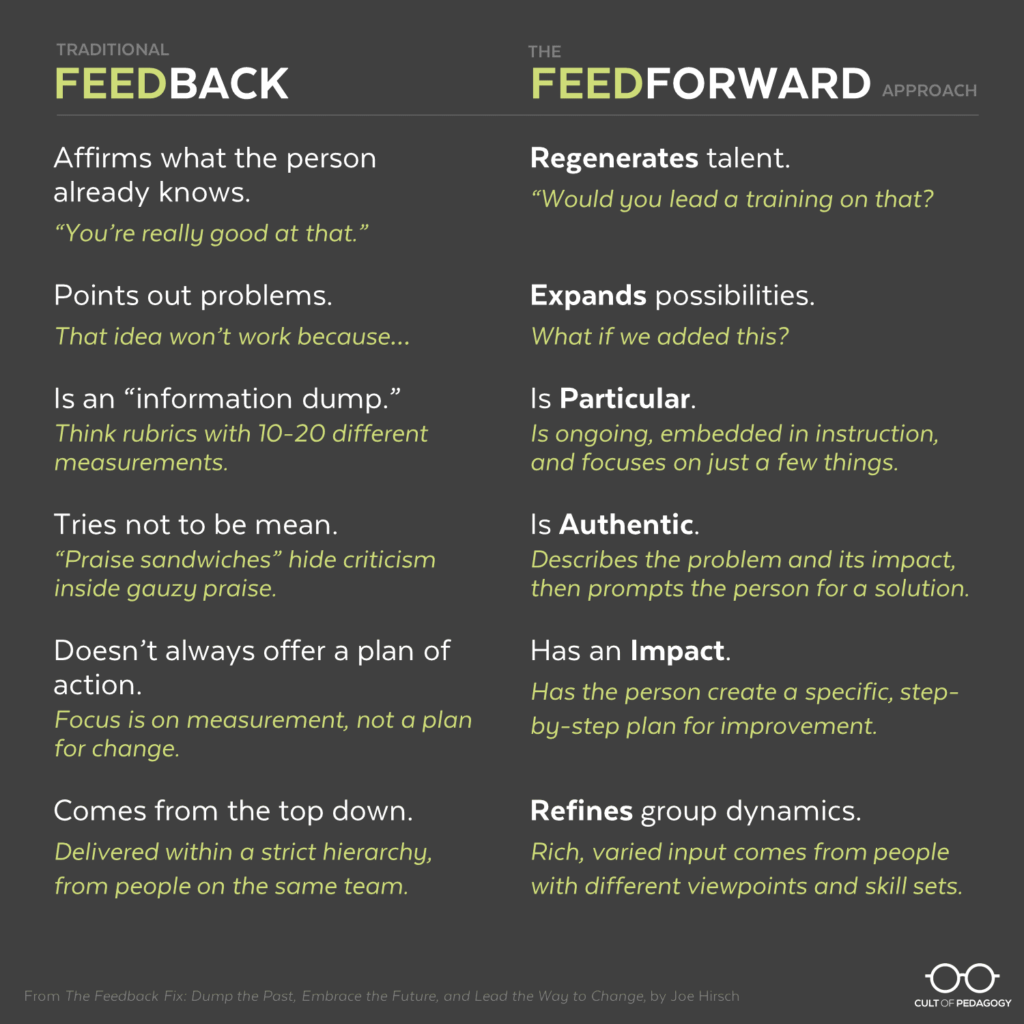Feedback towards students has long been focused on judgement and ratings. But in today’s learning environment, this backwards-looking approach doesn’t help students develop or improve. Through a year of online learning, students and educators alike realized the importance of frequent, constructive feedback in academic success. Our new survey of 3,052 undergraduates shows that students want timely, critical feedback in order to excel. As we gear up for the fall semester, we share a framework below that will help make your commentary more forward-looking.
Timely, frequent and constructive feedback leads to better engagement
When students are provided with regular commentary on their progress and how to improve, they’re more likely to thrive academically. Results from our new student survey (view the full report here) show that 72 percent of students who agree with the statement, “My instructors provide me with timely, helpful feedback to ensure I am successful academically” also agree that they’re more engaged and motivated in their coursework in and out of class. Three-quarters of students who agree with this statement are more likely to see the value of their higher ed investment.
(Click to tweet)
Criticism can often unlock a defense mechanism in students’ minds—but ‘wise criticism’ offers a more supportive, assuring stance. A 2013 study underscores the importance of wise feedback on student grades and motivation. Findings reveal that when students receive feedback that balances high standards with assurance (i.e. “I’m giving you these comments because I have very high expectations and I know that you can reach them”), they’re more likely to use that feedback to revise and improve upon their work later in the course. This is contrasted with students who received generic feedback from their educators (i.e. “I’m giving you these comments so that you’ll have feedback on your paper”)—a group who were ultimately less likely to revise their work and had lower trust towards their teacher.
Quality feedback helps students thrive
High-quality feedback involves going one step beyond ‘ranking’ students and instead directing them to personalized resources and providing assurance. Data from Top Hat’s spring 2021 student survey reveal that 69 percent of undergrads thought their instructors provided them with timely, helpful feedback to ensure they were successful academically. Next semester, how can you share impactful commentary that your students will be receptive towards?
Joe Hirsch, author of The Feedback Fix poses a solution: swapping feedback for feedforward. Ratings and judgment have long been two staples of traditional feedback. Feedforward, however, focuses on development and improvement—directing students to the unique resources and outlets they need in order to thrive. We’ve summarized his REPAIR framework below.
- Regenerates talent: Highlight strengths and areas for growth. For example, you could encourage a student who is confident in an area of psychology to lead a study group ahead of a midterm.
- Expands possibilities: Use ‘what if?’ statements to help students assess alternative solutions for their next assignment.
- Particular commentary: Avoid an ‘information dump’ and instead use your comments to highlight one or two areas for improvement along with tips to action these suggestions.
- Authenticity establishes trust: Outline the challenges in a student’s work, describe your rationale for why these issues persist and then point the student to solutions.
- Impact is delivered: Provide actionable recommendations students can implement, that will help them address an underlying challenge.
- Redefines collaboration: Let your students critique one another, which will regularly expose them to unique perspectives.
Jennifer Gonzalez, former educator and the Director of Cult of Pedagogy, offers additional examples of traditional feedback and feedforward, as gathered from her interview with Hirsch.

Looking forward to the fall
Quality, timely feedback doesn’t require overhauling your current approach. Instead, use some of Hirsch’s tactics to help your students develop and improve—not just on future assignments, but in your course. Feedforward is one of many ways to help build trust and transparency with students, which in turn, can help boost the perceived value of their education. For more data on the role feedback can play on students’ engagement and motivation, download our new student survey.


